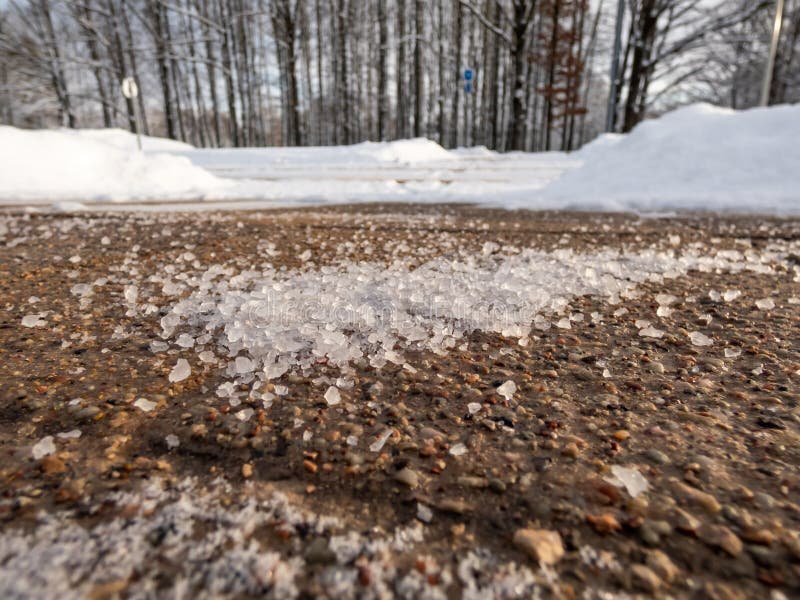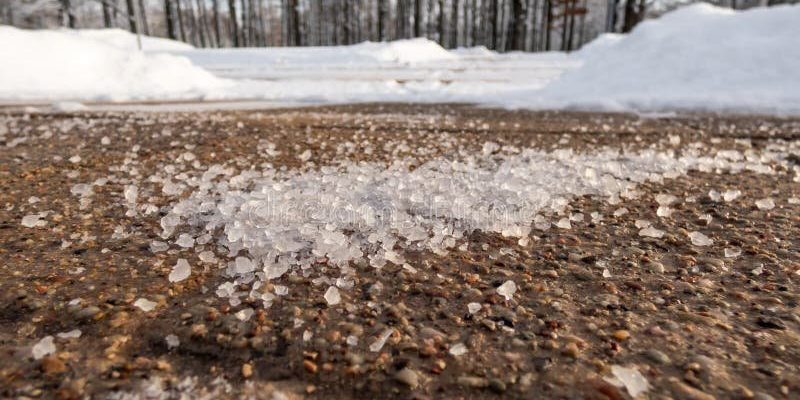
Let me explain: road crews use salt to melt ice and keep us safe, but that salty brine gets kicked up by passing cars, hanging in the air and settling on anything nearby—cars, doorbells, keypads, even that Chamberlain or LiftMaster remote you keep clipped to your visor. It’s not just about the rust on your bumper; salt spray can short-circuit electrical contacts, corrode batteries, and even block signals. Sounds dramatic, I know—but it happens more than you’d think.
So if you’re dealing with remote hardware that’s suddenly unreliable or a garage opener that refuses to sync, and you’re living anywhere near a treated roadway in winter, keep reading. We’re going to break down exactly why salt spray is such a problem, how to spot the signs, and what you can do to fix— and hopefully prevent—these annoying hardware headaches.
How Salt Spray Damages Hardware in Winter
It’s not always obvious why a little road salt would cause so much trouble. After all, it seems harmless when it’s just sprinkled on the street. But here’s how it works: salt lowers the freezing point of water, which means it keeps roads from becoming ice rinks. The downside? All that extra salt gets dissolved in the melted snow, splashing up as a fine mist or spray. When you park near a plowed road or leave hardware outside, that salty moisture lands on surfaces and starts seeping into tiny cracks.
Salt is highly corrosive. It acts like a silent invader, sneaking into electrical contacts, battery compartments, and circuit boards. Over time, the metal starts to break down, becoming rusty or greenish (that’s copper corrosion for you). The connections between components get weaker, and signals can’t travel the way they should. This is why your remote might stop syncing or the garage door opener acts like it’s possessed.
Even if your hardware seems sealed, microscopic gaps let salty moisture inside, especially as temperatures go up and down.
Honestly, it’s a bit like what happens to a bike left out all winter—it starts with a little rust here and there, then the chain just stops working. The same slow, sneaky process ruins your remotes, keypads, and even your car’s own electronics. The more times the roads are salted, the worse the buildup gets.
Common Hardware Problems Caused by Salt Spray
You might be wondering, what does salt spray actually do to your gadgets or remotes? There are a few telltale signs that salt is getting the upper hand:
- Unresponsive buttons: The most annoying side effect—your remote won’t unlock the door, open the garage, or even light up when you press the button. That’s often corroded contacts inside.
- Battery drain or acid leaks: Salt acts like a bridge, letting electrical current “skip” where it shouldn’t. This drains your battery faster and can even cause it to burst and leak.
- Signal interference: If your Chamberlain or Genie garage door opener suddenly fails to sync or pair, the salt might be blocking the antenna or damaging the tiny components that send the signal.
- Visible corrosion: Sometimes you’ll see white crust or green/grimy buildup around battery terminals or inside the remote’s shell. That’s the salt mixing with moisture and attacking the metal.
It’s not just remotes, either. Keyless entry pads, doorbell cameras, smart locks, and even car electronics—all can fall victim if they’re exposed regularly. And just because a device is “weatherproof” doesn’t mean it’s salt-proof.
Spotting Signs of Salt Spray Damage
Salt spray damage can be sneaky at first. You’re not going to see a big warning sign or hear an alarm. But if you know what to look for, you can catch problems early before they become a bigger headache.
Start with the obvious: Check for stickiness or crusty residue on and around your hardware. If you run your finger along the battery compartment and pull away something gritty, that’s a red flag. Next, pop open the device (if it’s easy and safe to do so) and look inside. Are there white or green marks near the battery or on the circuit board? Those are classic salt marks.
Watch for performance problems. Maybe your remote works sometimes, but not always. Maybe you have to stand way closer than usual for the signal to reach. Or maybe the buttons seem stuck or mushy. These are all clues that corrosion could be part of the problem—not just a dying battery or a busted code.
Don’t ignore even small glitches. Salt damage tends to get worse over time, and the sooner you catch it, the easier it is to fix.
If you’re feeling handy, you can use a magnifying glass to look for pitted or discolored metal inside your device. If you see that, salt has probably started to corrode the contacts.
How to Fix Remotes and Hardware Damaged by Salt Spray
If you’ve spotted salt damage, don’t panic. There’s usually something you can do—especially if you act fast.
- Clean out battery compartments: Remove the batteries and use a cotton swab dipped in a bit of white vinegar or rubbing alcohol to gently scrub away corrosion on the contacts. Dry thoroughly before replacing the batteries.
- Disassemble (if possible): For remotes like Chamberlain or LiftMaster, pry open the shell (carefully!) and inspect the circuit board. If you see salt buildup or green/white corrosion, brush it off gently with a soft toothbrush and more rubbing alcohol.
- Replace damaged parts: If the contacts are too far gone or a trace has been eaten away, you might need replacement parts or a new remote. For some models, you can order a replacement circuit board or battery tray online.
- Reset or re-sync: After cleaning, sometimes you’ll need to re-pair or reset your remote to the opener. Follow the brand’s instructions to re-sync the code.
Don’t forget to test the remote while you’re at it. Insert fresh batteries, try out each button, and make sure the signal is reaching as far as it used to. If it still doesn’t work and you can’t see obvious corrosion, the damage might be deeper—at that point, it’s usually time to buy a replacement.
Preventing Salt Spray Damage to Hardware
Here’s where a little bit of prevention goes a long way. You probably can’t avoid living near salted roads, but you can protect your hardware from getting coated in salty mist every winter.
Store remotes and electronics inside when you can. If you have a keypad or wireless remote on your garage, think about adding a weatherproof cover. For car remotes, try keeping them in your pocket or glove box instead of clipped out in the open when you’re parked near busy, salted streets.
- Wipe down surfaces regularly: Every few weeks, especially after snowstorms or heavy road treatments, clean off your remote, door keypad, or other exposed gear with a soft damp cloth (just water is fine for the outside).
- Seal cracks: If your device has a battery door or access panel, make sure it closes tightly. If you notice gaps, a little silicone or electrical tape can keep out moisture.
- Protect battery terminals: A dab of dielectric grease (found at any auto parts store) on battery terminals helps block salty moisture from causing corrosion.
Honestly, it doesn’t take much to make a huge difference—just ten minutes of maintenance every month can save you hours of troubleshooting later on.
Why Remotes from Different Brands React Differently
You might be wondering why your Chamberlain garage remote lasted through three winters just fine, while your friend’s Genie remote died after one snowy month. It comes down to how each brand designs and seals their hardware.
Some manufacturers use thicker plastic shells, tighter-sealing battery doors, or even waterproof coatings on their circuit boards. Others, especially budget or universal remotes, might cut corners to save money, leaving more gaps for salty air to sneak in.
Premium brands sometimes advertise “weather resistance,” but always check the details. That’s not the same as “salt-proof.” For the very best protection, look for devices rated IP65 or higher—they’re designed to handle dust, water, and even a bit of salty spray.
If you live where salt spray is a problem, it’s worth spending a few extra dollars for a more rugged remote, especially for critical hardware like garage openers or security pads.
Universal remotes and cheaper models can work fine—but they might need more frequent cleaning and more careful storage in winter.
Alternatives and Upgrades for Salt-Prone Areas
If you’re tired of cleaning your remote every week, it might be time to think about an upgrade. Some new solutions are much less vulnerable to salt spray and winter weather.
- Wired keypads: Instead of a wireless remote, a hardwired keypad can be mounted inside your garage or on your door—shielded from salt and moisture. No code syncing or wireless pairing headaches.
- Smart garage door openers: These use Wi-Fi instead of traditional radio frequencies, and many models are sealed for outdoor use. Some can even be controlled from your phone, which you can keep safely inside.
- Weatherproof enclosures: If you don’t want to buy new hardware, you can get aftermarket boxes or shields for your existing remotes and keypads. Just make sure they don’t block the signal or interfere with the pairing code.
Sometimes, you just have to accept that certain hardware isn’t designed for harsh winters and look for models that are. Check forums, reviews, or talk to your local hardware store—they’ll know which brands last longest in salty conditions.
When to Replace vs. Repair Hardware Exposed to Salt
Let me be honest: there’s a point where it’s smarter to replace your salt-damaged hardware than keep trying to resuscitate it. If you’ve cleaned, dried, and re-synced your remote and it’s still unreliable, the corrosion may be inside the circuitry, where you can’t reach. Signals might get scrambled, or the code can’t sync properly, no matter how many times you reset.
Here are some signs it’s time to throw in the towel:
- The remote only works sporadically, even with brand new batteries and a thorough cleaning.
- Chunks of metal are flaking off, or battery contacts are crumbling.
- The code simply won’t sync, or the pairing/pair process fails repeatedly.
- Obvious acid leaks, swelling, or a burning smell (please, don’t keep using these—recycle safely!).
When you do buy a replacement, consider investing in a higher-quality, weather-resistant model, especially if you know you’ll be dealing with salt spray every winter.
Sometimes spending a little more up front saves you from a whole season of frustration, troubleshooting, and emergency fixes.
Final Thoughts: Stay Ahead of Salt Spray Headaches
Living near salted winter roads doesn’t have to mean living with hardware troubles all season long. Salt spray is sneaky, but the sooner you spot the signs—corrosion, stuck buttons, battery drain—the easier it is to get ahead of the problem. A little cleaning, some smart storage, and maybe a sturdier remote can make all the difference.
Remember, nobody wants to be stuck outside in the cold, waving a dead remote at their garage door. If you keep your hardware clean, dry, and protected, you’ll keep your winter routine running smoothly—and keep that salt where it belongs: on the road, and far away from your electronics.
